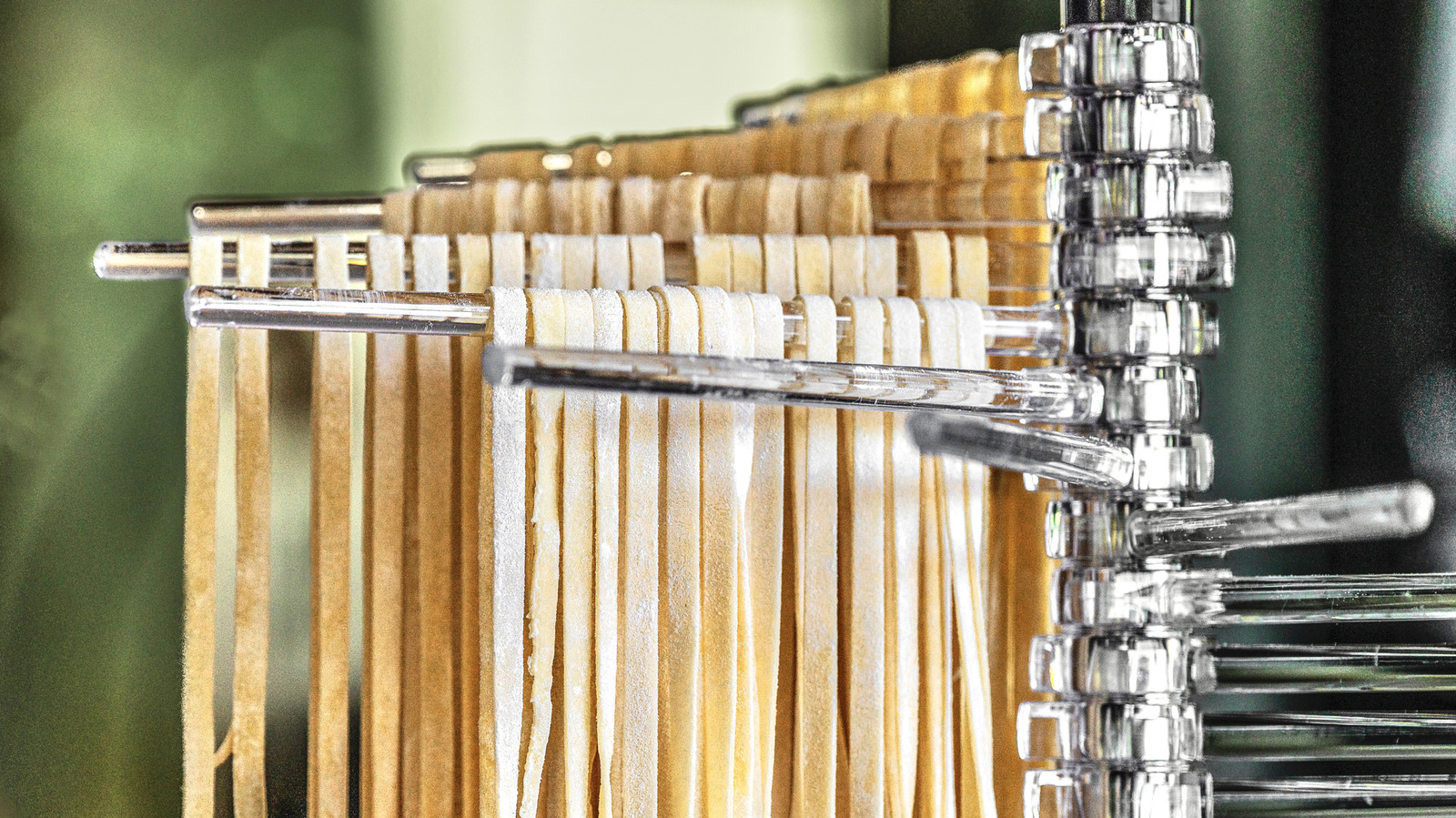A homespun batch of tagliatelle just hits different. Perhaps it’s the care put into running the tender dough through the plates of a pasta maker that makes every morsel taste ambrosial? Whatever it might be, once you’ve cut your pasta into wide ribbons of pappardelle or delicate strands of spaghetti you’ll need a rack to dry them on. Haven’t got one? Here’s where a regular old clothes hanger comes in handy.
Fresh pasta noodles need to air dry before you cook them to prevent them from sticking together (you can toss them into simmering water immediately if you prefer, but there’s a risk they could cling together in a bundle). Usually, they’re hung on the evenly-spaced wooden dowels of a pasta drying rack that protrude to one side. This allows the air to circulate freely around the noodles so the outer surface of each strand can develop some texture as it hardens. As the pasta loses its softness, it becomes much easier to work with, collect up and either boil post-haste or set aside for later. To transform a clothes hanger into a pasta dryer, simply drape your lengths of tagliatelle over the base, leaving a small gap between each strand. Then hang it onto a door handle, the back of a chair, or anywhere else where it can be suspended safely.
Place plastic wrap on your clothes hanger
If using a wooden hanger, you should give it a quick wipe down before draping your pasta onto it to ensure it’s clean. However, other types of hangers, for example those coated in a velvety material that’s grippy, can benefit from being wrapped in plastic wrap first. This lends the hangers a non-stick surface, which means you’ll be able to lift them off more easily, without them snagging and breaking, when they’re fully dried. We’d also avoid using those thin metal hangers that often come from the dry cleaners as they could cut through the delicate texture of your pasta dough. Leave your pasta noodles on your drying rack for at least 15 minutes if you want to cook them as soon as possible. However, if you’re going to set your fettuccine aside for the next day, feel free to dry for longer.
This trick also works if your sheets of homemade pasta dough are too soft to cut through. All you need to do is place your sheets on your hanger and let them to dry for five to 10 minutes before gently removing them and cutting into lengths. Moreover, if you don’t make pasta very often, it just makes good sense to use a hanger to dry your spaghetti instead of investing in a genuine pasta dryer that takes up space in your kitchen cupboards. Having said that, some pasta dryers like this collapsible one, can be dismantled for neater storage. Before you start, we recommend you avoid these 15 common mistakes people make with fresh pasta.





